Title : Proteome dynamics of bacterial pathogens during infection - New drug targets
Abstract:
Staphylococcus aureus ranks as the second most critical gram-positive bacteria on the WHO's priority list, spreading through nosocomial & commensal transmissions. Its antibiotic resistance evolving at an unprecedented pace, presents itself as a constant global danger. This ability gave rise to its highly resistance variant, MRSA – Methicillin Resistant Staphylococcus aureus. Kinases in this organism are an interesting yet comparatively small global research niche and amongst them are the Two-Component regulatory Systems (TCS) - a group of 16 Histidine Kinases (HK) which are a ventured domain of kinases since they help the pathogen to adapt to temperature flux, nutrient deprivation, biofilm formation, virulence, antibiotic toxicity and much more.
Understanding protein kinases, however, is of equal importance to build an overall picture of this pathogen’s spontaneous response leading to its persistence or resistance or to evolution of a variant. In this study, we use the MRSA-USA300 strain and deduce that several phosphoproteins also get targeted by Serine/Threonine (STK)/Tyrosine Kinases (BYK) – Stk1, RsbW, HprK & Cap5A1B under phagolysosomal-like stress conditions. In those conditions, we followed the bacterial growth kinetics which helped us deduce a transient exposure window, to find the deregulated STK/BY kinome targets using state of the art phosphoproteomics. Using that knowledge, we performed kinase assays to investigate the interactors of the above proteins. We also evaluated knockouts of the kinome targets to assess the organism’s survival in varying stress and macrophage survival assays. In the future we aim to evaluate the phospho-ablative/mimetic mutants of the above kinase substrates and narrow them down to a potential therapeutic target.



